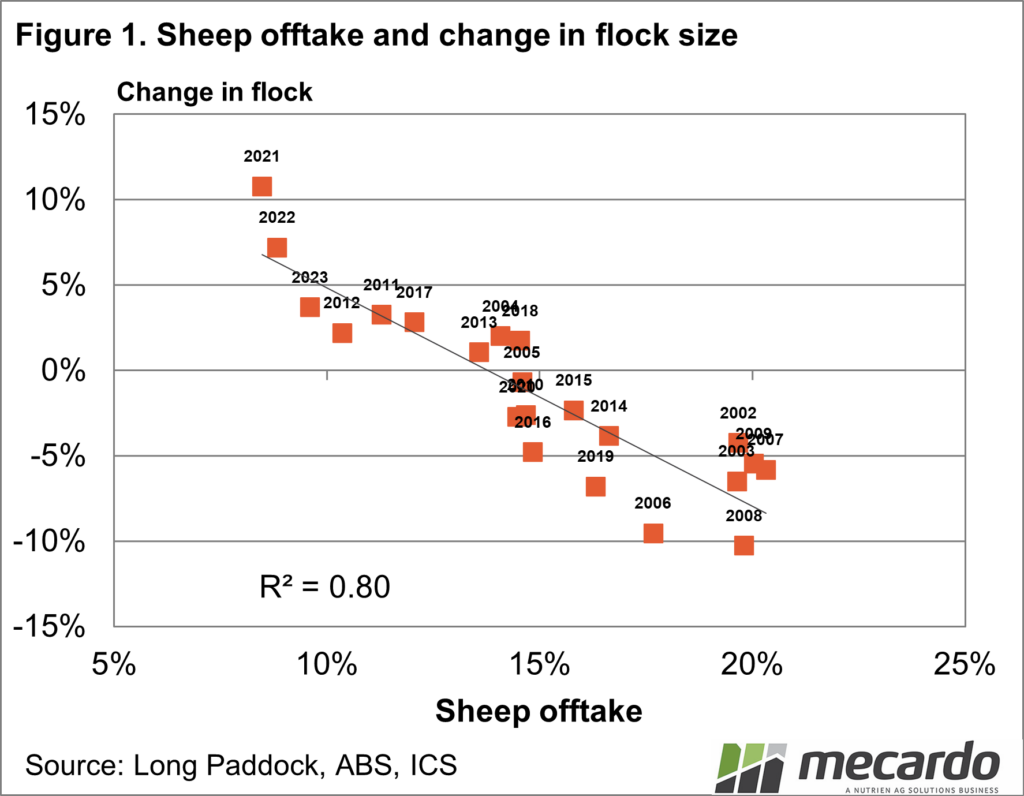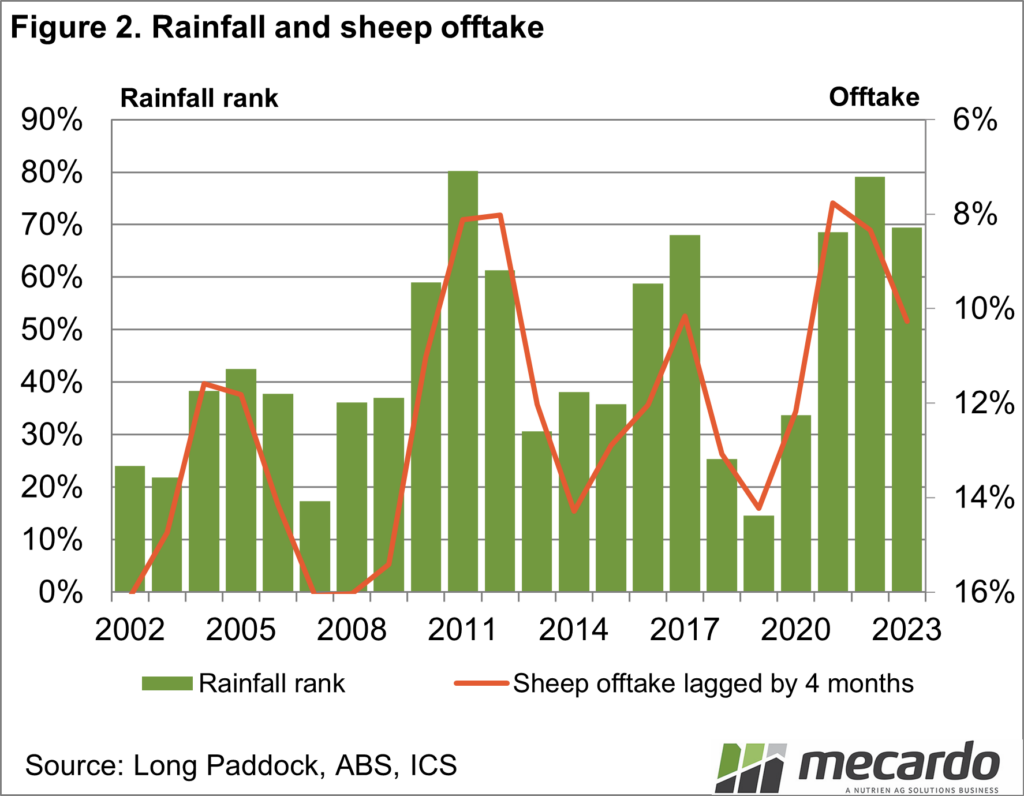Overall, eastern Australia has come off the back of three consecutive good springs and it is entirely likely that the spring in 2023 will not be as good. This scenario is based simply on historical rainfall data. With this in mind, we investigate what this means for sheep offtake and changes in flock size and guess what is likely to happen next season.
Last September, Mecardo looked at sheep and lamb offtake levels as they provide a direct view as to whether the Australian sheep flock is expanding or contracting. Offtake is taken to mean the running 12-month total of sheep and lambs sold to abattoirs or sent to live export from the eastern states expressed as a percentage of the flock size.
The MLA https://www.mla.com.au/globalassets/mla-corporate/prices–markets/documents/trends–analysis/sheep-projections/february-2023_mla-australian-sheep-industry-projections_080223.pdf sheep projections from February are projecting a 3.6% increase in the flock size this season, after large increases during the past two seasons. Beyond this season the MLA projects sheep numbers will stabilise. The wool industry estimates wool production but does not provide an estimate of flock size.
Traditionally the flock size in Australia was adjusted by varying the number of adult sheep sold to abattoirs/live exports. Figure 1 compares the annual sheep offtake and the change in flock size by season for the past two decades. The current sheep offtake for the past 12 months has been used for the current season. The correlation is a strong one.
With the increase in prime lamb production in Australia in recent decades, the lamb offtake has risen markedly. This means that variations in the lamb offtake can now affect the flock size. In addition change in the Western Australian flock has a weaker correlation to the sheep offtake. These complications will be looked at in subsequent articles.
Experience would indicate that the sheep offtake, the key driver of flock size variation, is itself strongly influenced by seasonal conditions. The proxy used for seasonal conditions is rainfall, in this case, sourced from the Long Paddock website https://www.longpaddock.qld.gov.au/silo/.
Figure 2 compares calendar year data for the Australian sheep offtake, which lags by four months, with the weighted average 12-month rainfall rank from wool-growing regions around Australia. The weighting is based on wool sale data. The rainfall rank is shown in bars (left-hand scale) and the sheep offtake is shown by the line (the right-hand scale which is reversed). Data from the past two decades is shown. When rainfall increases, the sheep offtake tends to decrease (with a lag of some four months on average). The rainfall rank of the current season (to date) and the past two seasons has been high and unsurprisingly the sheep offtake has been low, allowing the flock to expand. Historic rainfall suggests that another season with a rank of 70% or greater is a low probability, so in the coming season, the sheep offtake is likely to increase as the rainfall rank falls.
What does it mean?
The sheep offtake is already rising from low levels towards its neutral level of around 12%. Where it goes beyond that will depend on rainfall this coming spring in Australia. The MLA projection of the flock size stabilising next season looks to be a good one. In terms of supply, it means more sheep will be sent to abattoirs (somewhere around 12% of 79.5 million which equals 9.45 million) next season, than in recent seasons.
Have any questions or comments?
Key Points
- Good rainfall during recent seasons has allowed the sheep offtake to fall which in turn allowed the Australian flock size to increase.
- The probability of rainfall being lower in relation to 2021-2023 in the coming season is good, so the probability of the sheep offtake rising back to neutral levels (around 12%) is strong.
Click on figure to expand
Click on figure to expand
Data sources: MLA, Long Paddock, ABS, ICS, Mecardo














